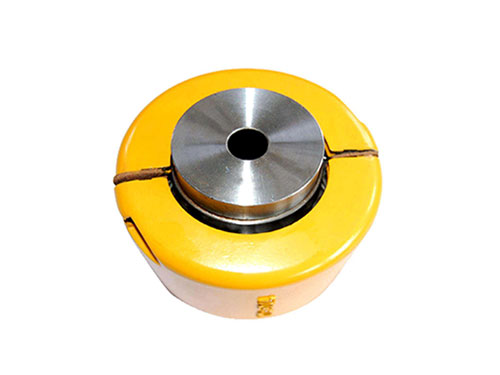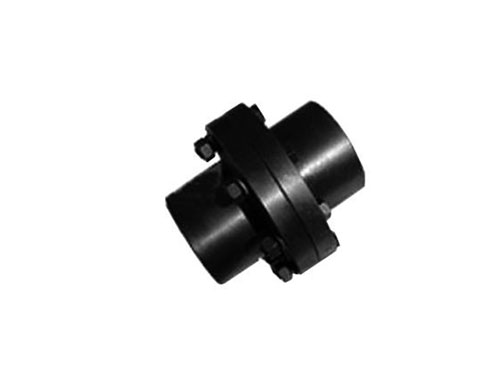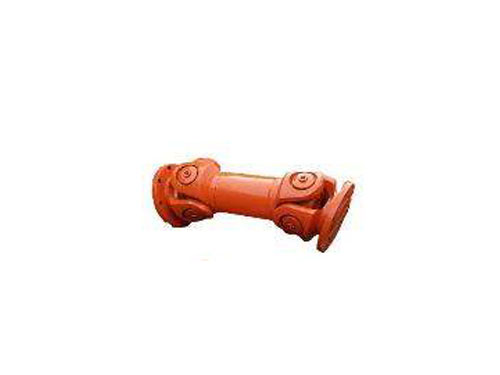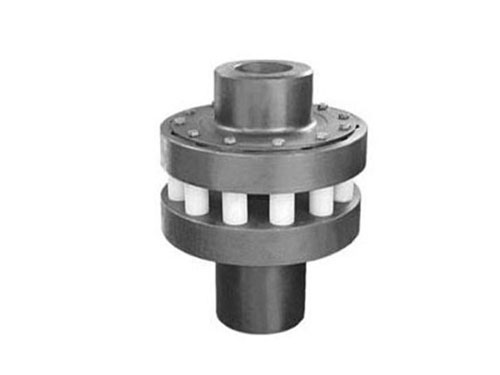 Three-jaw coupling for pumpThe three-jaw coupling for pumps uses a number of non...
Three-jaw coupling for pumpThe three-jaw coupling for pumps uses a number of non... KC type sprocket couplingKC series sprocket coupling is used to connect...
KC type sprocket couplingKC series sprocket coupling is used to connect... GY, GYS, GYH type rigid couplingThe surface roughness of the coupling means adding...
GY, GYS, GYH type rigid couplingThe surface roughness of the coupling means adding... Small size universal couplingCommon types of universal couplings are: universal...
Small size universal couplingCommon types of universal couplings are: universal... HL type elastic pin couplingThe elastic pin coupling uses a number of non...
HL type elastic pin couplingThe elastic pin coupling uses a number of non...The stability of the coupling and the cause of the failure of the gear coupling
When the coupling is working stably, the reason for its failure is not due to excessive load and average stress, but due to excessive alternating stress, which exceeds the allowable fatigue limit and fatigue cracks or fractures occur on the compression rod near the compression ring, and then Spread to the side of the tie rod, and then the coupling fails.According to the steel sheet fatigue test, under normal working conditions, the number of fatigue cycles of the metal steel sheet is theoretically unlimited, so the rated service life of the GNL coupling is good.
When the GNL coupling is installed in the transmission system, the rigidity of the steel plate group plays an important role in the torsional characteristics of the system.Normally, the working speed of the system should avoid the natural frequency (first order) of the system to avoid resonance.
If the installation accuracy of the GNL coupling does not meet the requirements, and the steel sheet pressure rod produces a second-order buckling shape, the area of friction between the sheets will expand to the middle of the pressure rod, resulting in greater frictional damping, due to the steel sheet Yes, it is made of elastic steel material that can withstand high temperatures, so the oscillating friction between the steel sheets during operation will not affect its life. This is the excellent feature of the GNL coupling.In order for the GNL coupling to work normally, the second-order buckling phenomenon is undesirable.
According to GNL's steel sheet shaft displacement stiffness characteristics.When the axial and angular deviations (within 2° and 0.5°~1°) are generated by the transverse vibration of the shafting, the restoring force is correspondingly small, and the alternating vibration force is also attenuated through the transmission of the two sets of steel plates.As a result, the transverse amplitude value on the driven shaft section is reduced to a small value. The excellent vibration isolation characteristics of the GNL coupling are not only confirmed by the specific data measured on the test bench, but also by all GNL couplings installed The transmission equipment and marine propulsion unit are confirmed.
The structure of GNL steel sheet flexible coupling is mainly composed of stainless steel sheet metal (steel sheet), half coupling, intermediate sleeve, compression element, bolt, lock nut, limit washer, etc.
Its working principle: the torque is input from the half coupling of the active end, and the torque is transmitted to the front flexible steel plate group through the bolts arranged at intervals along the circumference, and then the flexible steel plate group is transmitted to the intermediate sleeve through the bolts, and is also transmitted by the flexible steel plate group through the bolts to the intermediate sleeve. The rear end of the flexible steel sheet group, bolts and driven half coupling output.The steel sheet component is the key component of the flexible coupling. It is composed of a number of thin elastic stainless steel laminated, through which the torque is transmitted and the offset from multiple directions is removed.The thickness of the steel sheet is generally selected according to the size of the torque and the different working conditions, generally 0.35~1.20mm, and its shapes include ring type, connecting rod type, waist type and so on.
During normal and stable operation without axial displacement and angular deflection, the rods bear tensile and compressive stress and the centrifugal force of the rotating mass, and the metal sheet bears the resultant average stress.In actual work, the shaft system has some string movement, angular deflection and radial displacement.Therefore, a bending alternating stress is superimposed on the rod, the alternating frequency is equal to twice the rotation frequency of the shaft system, and the amplitude of the alternating depends on the vector sum of several variable displacement values.
Gear coupling failure conditions and causes:
One, hold to death
When the jamming phenomenon and the rust are severe to a certain extent, the main oil pump rotor, steam turbine rotor and coupling will bite together, and the coupling has been scrapped at this time.
XNUMX. Broken tooth
Tooth breakage is mostly caused by uneven forces on the inner and outer gear rings of the coupling, such as the deviation of the tooth profile during processing, or the partial gear ring enters a hard object during operation, causing individual teeth to be stressed; the deviation during installation will also cause local The tooth is under force.In addition, improper heat treatment process during coupling processing, residual stress and even cracks in individual teeth, are also one of the reasons for broken teeth.
Three, wear
Wear is a common defect of gear couplings. During operation, due to relative sliding between the inner and outer gear rings of the coupling, this is the basic cause of wear.The other reasons that cause the coupling to wear are mainly:
(1) Poor manufacturing process.The tooth profile error between the inner and outer gear rings of the coupling with good processing technology is small, and the rotating torque transmitted by the coupling can be evenly distributed on each tooth; while the coupling gear ring with poor processing technology will receive uneven forces, resulting in Individual teeth are subjected to excessive force, causing wear and tear, and broken teeth will occur in severe cases.
(2) Improper material application or surface heat treatment process.The tooth surface of the gear coupling is generally quenched or nitrided to increase its surface hardness and increase its performance.However, due to improper heat treatment process, the inner and outer tooth surfaces of the coupling will have insufficient hardness and poor contact between the inner and outer teeth, which will cause the coupling to wear.
(3) The lubrication effect is poor.Since the two rotating parts connected by the gear coupling move axially during rotation, the coupling must be well lubricated.Poor lubrication effect or loss of lubrication will inevitably increase the friction between the inner and outer teeth of the coupling, and long-term operation will cause the wear of the coupling.
(4) Installation deviation.When the unit is installed, there will be a deviation between the center of the end face of the driving shaft and the driven shaft. When the deviation exceeds the allowable deviation range of the gear coupling, the main oil pump will make a conical pendulum movement with the turbine rotor, resulting in the main oil pump bearing and thrust. The tile wears and even the load swing of the hydraulic adjustment system.
Fourth, jam
When the lubrication effect of the coupling is poor or loses lubrication, the coupling and the connected shaft will jam.Similarly, if the installation deviation is too large, it will also cause this phenomenon.Since the front box where the main oil pump is located is very close to the front steam seal of the steam turbine, steam will enter the front box when the operation is not adjusted properly. The lubrication effect of the water-carrying turbine oil is good and reduces, and it also accelerates the corrosion of iron parts. process.Long-term residual moisture in the coupling will accelerate the seizure of the coupling.